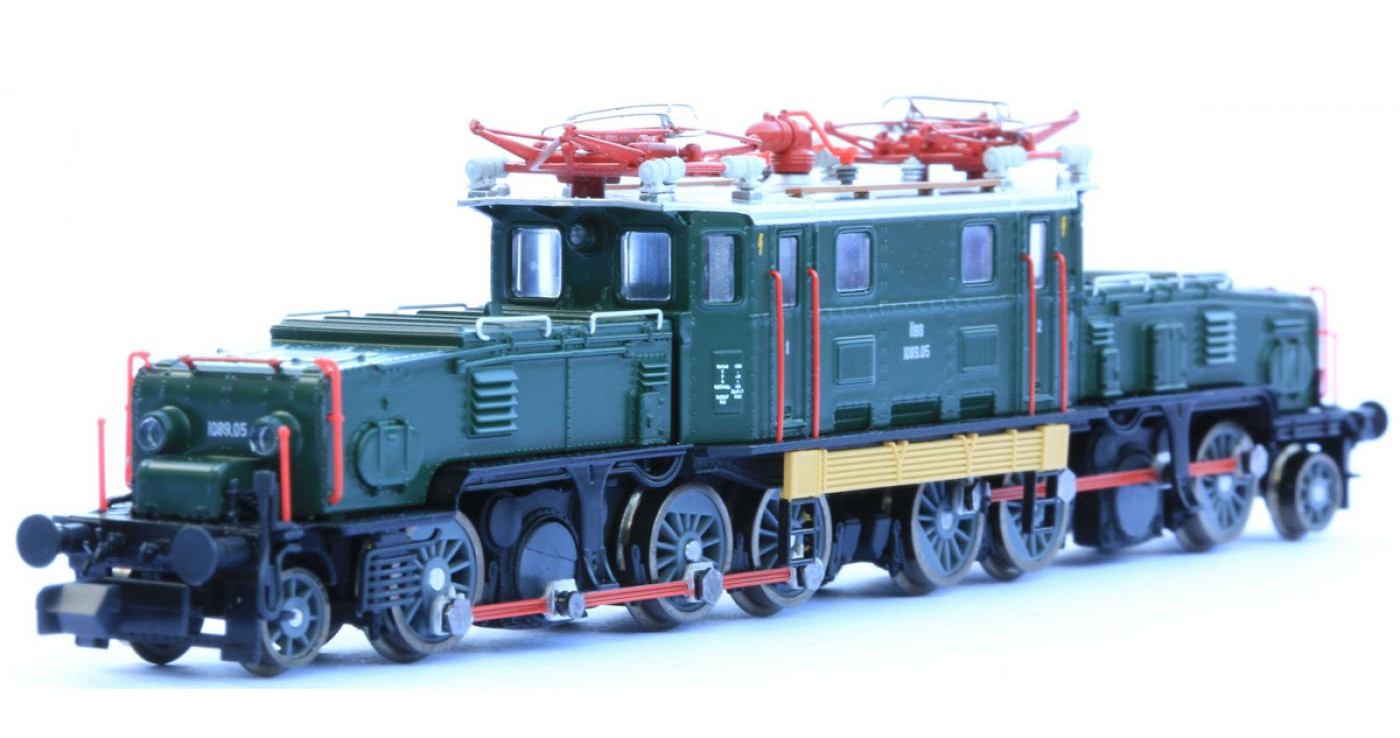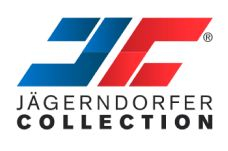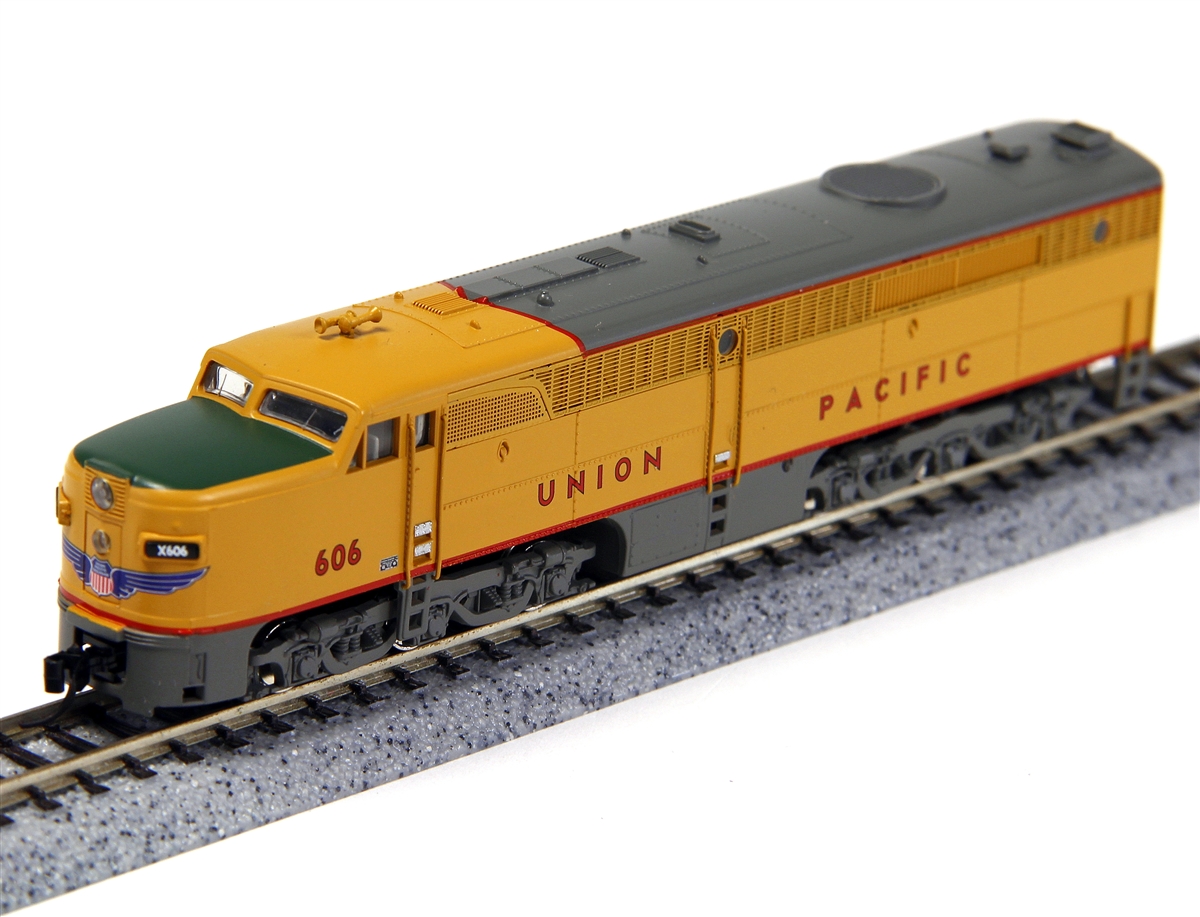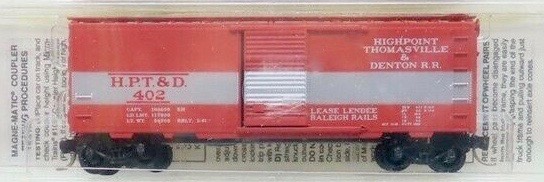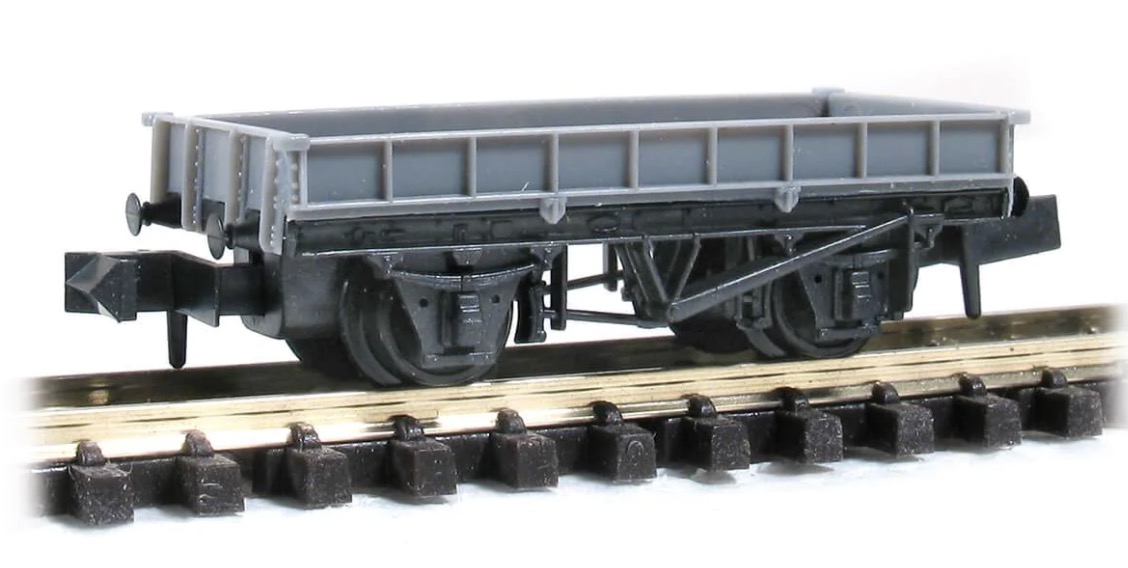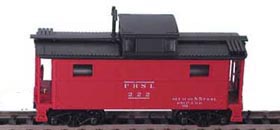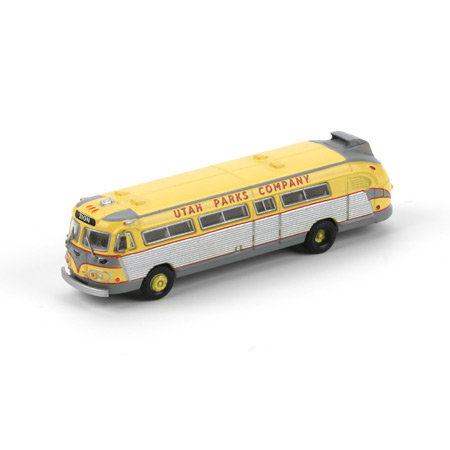Model Information: In 2018 Jägerndorfer started production of the iconic "Crocodile" N-Scale locomotive class 1089 of the Austrian Federal Railways. This new model is is mostly diecast metal and comes equipped with a highly efficient 5 pole motor with flywheel. The model is highly detailed which include full roof details with intricate pantographs. The locomotive is equipped with directional LED lights which can be digitally controlled. The model is painted in the era IV Austrian green livery which was the last color used before the loco was retired. This exquisite model was never produced in N-Scale so we feel it will be a favorite among collectors across the globe
DCC Information: NEM 651 DCC receptacle.
Prototype History: Crocodile (German Krokodil) electric locomotives are so called because they have long "noses" at each end, reminiscent of the snout of a crocodile (see also Steeplecab). These contain the motors and drive axles, and are connected by an articulated center section. The center section usually contains the crew compartments, pantographs and transformer.
A prototype locomotive, SBB-CFF-FFS Ce 6/8 I number 14201, was ordered in June 1917. The production "Crocodiles" were the series SBB Ce 6/8 II and SBB Ce 6/8 III locomotives of the SBB, Swiss Federal Railways, built between 1919 and 1927. There were 33 class Ce 6/8 II and 18 class Ce 6/8 III, making a total (excluding the prototype) of 51 locomotives. These locomotives were developed for pulling heavy goods trains on the steep tracks of the Gotthardbahn from Lucerne to Chiasso, including the Gotthard Tunnel.
The electric motors available at the time were large and had to be body-mounted above the plane of the axles, but flexibility was required to negotiate the tight curves on the Alpine routes and tunnels. An articulated design, with two powered nose units bridged with a pivoting center section containing cabs and the heavy transformer, met both requirements and gave excellent visibility from driving cabs mounted safely away from any collision. The two motors in each nose unit were geared to a jackshaft between the drive axles farthest from the cab, with side rods carrying the power to the drivers. These locomotives, sometimes called the "Swiss Crocodile" or "SBB Crocodile", were highly successful and served until the 1980s. Märklin published a book about their history in 1984. Several are still in operation as preserved historical locomotives.
From Wikipedia
A prototype locomotive, SBB-CFF-FFS Ce 6/8 I number 14201, was ordered in June 1917. The production "Crocodiles" were the series SBB Ce 6/8 II and SBB Ce 6/8 III locomotives of the SBB, Swiss Federal Railways, built between 1919 and 1927. There were 33 class Ce 6/8 II and 18 class Ce 6/8 III, making a total (excluding the prototype) of 51 locomotives. These locomotives were developed for pulling heavy goods trains on the steep tracks of the Gotthardbahn from Lucerne to Chiasso, including the Gotthard Tunnel.
The electric motors available at the time were large and had to be body-mounted above the plane of the axles, but flexibility was required to negotiate the tight curves on the Alpine routes and tunnels. An articulated design, with two powered nose units bridged with a pivoting center section containing cabs and the heavy transformer, met both requirements and gave excellent visibility from driving cabs mounted safely away from any collision. The two motors in each nose unit were geared to a jackshaft between the drive axles farthest from the cab, with side rods carrying the power to the drivers. These locomotives, sometimes called the "Swiss Crocodile" or "SBB Crocodile", were highly successful and served until the 1980s. Märklin published a book about their history in 1984. Several are still in operation as preserved historical locomotives.
From Wikipedia
Road Name History:  The Austrian Federal Railways (German: Österreichische Bundesbahnen or ÖBB, formerly the Bundesbahn Österreich or BBÖ) is the national railway system of Austria, and the administrator of Liechtenstein's railways. The ÖBB group is owned entirely by the Republic of Austria and is divided into several separate businesses that manage the infrastructure and operate passenger and freight services.
The Austrian Federal Railways (German: Österreichische Bundesbahnen or ÖBB, formerly the Bundesbahn Österreich or BBÖ) is the national railway system of Austria, and the administrator of Liechtenstein's railways. The ÖBB group is owned entirely by the Republic of Austria and is divided into several separate businesses that manage the infrastructure and operate passenger and freight services.
The Austrian Federal Railways has had two discrete periods of existence. It was first formed in 1923, using the Bundesbahn Österreich name, as a successor to the Imperial Royal Austrian State Railways (kkStB), but was incorporated into the Deutsche Reichsbahn during the 1938-1945 Anschluss. It was reformed in 1947, using the slightly different Österreichische Bundesbahnen name, and remains in existence in this form.
Major changes currently being made to the Austrian railway network are the construction of the Wien Hauptbahnhof (Vienna main station), the Koralm Railway, the Semmering Base Tunnel and the Brenner Base Tunnel connection with Italy.
From Wikipedia

The Austrian Federal Railways has had two discrete periods of existence. It was first formed in 1923, using the Bundesbahn Österreich name, as a successor to the Imperial Royal Austrian State Railways (kkStB), but was incorporated into the Deutsche Reichsbahn during the 1938-1945 Anschluss. It was reformed in 1947, using the slightly different Österreichische Bundesbahnen name, and remains in existence in this form.
Major changes currently being made to the Austrian railway network are the construction of the Wien Hauptbahnhof (Vienna main station), the Koralm Railway, the Semmering Base Tunnel and the Brenner Base Tunnel connection with Italy.
From Wikipedia
Brand/Importer Information: Jägerndorfer Ges.m.b.H. is an Austrian manufacturer of model railroad equipment. They have been in business since 2011 and are located in Pottenstein, Austria. The carry an interesting line of N Scale products whose prototypes are European in nature (especially Austrian). They (also) produce HO products.
Item created by: gdm on 2018-05-25 08:46:15. Last edited by gdm on 2020-07-24 07:29:19
If you see errors or missing data in this entry, please feel free to log in and edit it. Anyone with a Gmail account can log in instantly.
If you see errors or missing data in this entry, please feel free to log in and edit it. Anyone with a Gmail account can log in instantly.


